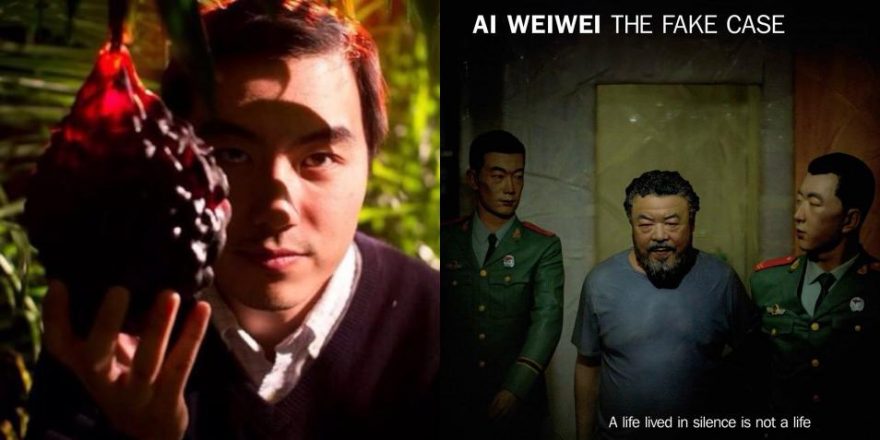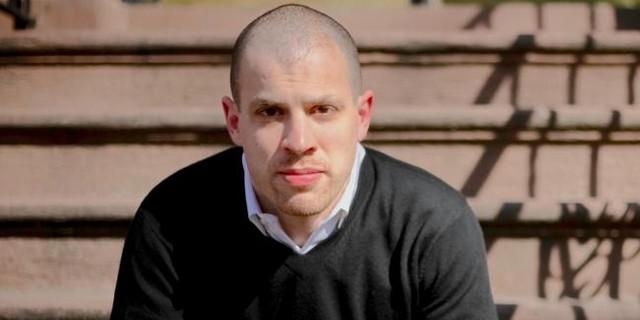I’d love to be able to make a film like Andreas Johnsen has done with his latest documentary, Ai Weiwei: The Fake Case. There’s a subtlety in structure and visual approach that is clear and simple and has a surprising intimacy with his subject that I can only admire as a filmmaker.
Not everyone can make a documentary. It’s not as simple, as some conjecture, as picking up a camera and turning it on. Everyone, including their mother, thinks they have material for a documentary film. And everyone, including their pet dog, thinks they can make one. But a good story doth not maketh a good film. Like any artistic medium, the execution of the project makes all the difference. In the wrong hands, a good story can turn into cheap Chinese takeout, not Grandma’s scintillating Sichuanese cuisine.
Documentary filmmaking is not much different than making a fiction film. In fact, it can be ultimately more challenging because the outcome is wholly unpredictable. That element — the unknown — is the inertia I thrive upon as a filmmaker. But to get to that point, I must go through the same process required of fiction filmmakers.
I imagine Johnsen went through a similar process in making The Fake Case. Before I make a film, I spend ample time imagining the completed movie in a dreamed-up version. This is an amalgamation of on-the-ground research and pure fictional scriptwriting. Usually I approach the writing in the form of a treatment.
For Up the Yangtze, I imagined the film unfolding like a Chinese Gosford Park, exposing the below-and-above-deck dichotomy between the Western tourists and the Chinese crew. I had a beginning, the opening sequence through the Three Gorges Dam locks, and an ending, the flooding of the river. I had some imagined storylines about the trajectory of some of the characters. I didn’t know what would happen to these characters but I imagined extremely dramatic and emotional outcomes and conflicts. More essential at this stage was infusing the film with a sense of pacing, tone and visual motif. I wanted the cruise ship to become our vessel to explore modern China. The Yangtze was the “River of Life” languidly passing through history and culture until reaching its final destination at the Three Gorges Dam, this giant testament of modernization.
Similarly, Johnsen must have seen The Fake Caseas an allegory for the Kafka-esque paradoxes of China or any authoritarian regime, for that matter. (I couldn’t help but see parallels with Jafar Panahi’s This is Not a Film.) Johnsen made the directorial decision not to approach the film as a catch-all biopic or artist’s propaganda film. It’s dramatic, not celebratory. There’s no need for explication to probe what’s going on in the subject’s mind. Any information is gleaned through Ai Weiwei watching news reports or reading about himself on social media or being interviewed by journalists. The filmmaker takes an observational position usually through Ai Weiwei’s point of view. We rarely leave his side. The private moments are quiet and intimate. There are a lot of “thinking shots.” These thinking shots help to build up the sense that Ai Weiwei is plotting or contemplating a new idea. It’s an interesting setup that helps to heighten the public/private persona of an art celebrity.
In a way, Ai Weiwei is the perfect foil to observe the ironical dysfunction and oppression that seeps between the cracks of modern China. He’s in the privileged position of being a dissident in the very country that has outlawed him. As Ai Weiwei says, “When I’m in China, people listen to me. When I’m abroad, nobody really listens to me.” And with that, Johnsen seems to have considered the uniqueness of his character: Ai Weiwei is Josef K. from The Trial, but not the passive version lost in the quagmire – this is Josef K. set on revenge.
The pre-thought that goes into making a film permeates through to production. When you’ve embedded your story with ebullient dreamed imagery, filmic references (Up the Yangtze was “The Love Boat meets Apocalypse Now”), and subtext, the next step is to throw it all away. Production is a process involving collaboration, timing, circumstance, instinct and trust. It’s not possible to adhere to a script because real life doesn’t allow you to preconceive the unpredictable paths that your subjects will take. It involves being in the present. For me, the production process is about maintaining friendships and openness with your subjects so that they feel comfortable to express their inner thoughts or just to simply allow you into their inner sanctum.
Johnsen is not only the film’s director, but also its cinematographer and sound recordist. This allows him to break past Ai Weiwei’s personal space. The camera often lingers intimately near his face, framing him constantly in close-ups. Ai Weiwei is so comfortable with the presence of the camera, Johnsen is able to film him in restive, meditative states of mind that allow us to interpret what may be churning through his brain.
One scene in particular amazes me. The scene works in two layers. The first involves the sculptor Li Zhanyang questioning Ai Weiwei outside in a garden. It’s quiet and Ai Weiwei seems to be sunbathing in the bright light. His eyes are closed. The camera is inches away from him. We hear his deep breath. He speaks in whispers. Li asks, “Can you incite subversion of the state of power by being influential?” Ai replies, “Yes, my power is actually beyond that.” Ai continues to breath deeply, eyes closed. It’s a powerful moment. But the scene doesn’t stop there. The next layer works in a meta-sense. Li starts to photograph the resting Ai Weiwei, who is unaware. Li clicks away with his camera. An assistant appears and participates in the photos. At one point, she flashes rabbit ears behind Ai Weiwei as Li snaps a photo. He awakens, lazily, out of his contemplation. Undisturbed, Ai closes his eyes again.
The scene reminded me of the presence of the film camera, then the omnipresence of cameras constantly documenting Ai Weiwei, then I realized that, in fact, one of the motifs in the film is the quotidian day-to-day in which many scenes unfold. Ai Weiwei chatting with his friend in his backyard, Ai Weiwei eating at a fancy sushi restaurant, Ai Weiwei walking around a park, etc. The opening credits begin on an establishing shot of Beijing in the early morning. A city at rest and yet brimming with individual stories of turmoil. Or as Ai Weiwei described the city for Newsweek, “Beijing is a nightmare.” Further consideration of the cinematographic approach, leads me to think that Ai Weiwei may have encouraged Johnsen to blatantly and openly film in as many public spaces as possible, as one of Ai’s mandates is to never hide anything. “No secrets. I always invite them to sit at the table,” he explains at one point in the film.
When production is complete, the next and equally crucial phase begins: the editing. A film with bad material can be shaped into a good movie. A film with great material can be shaped into a great film. Editors can find strokes of pure cinematic genius, sometimes by happenstance. When Hannele Halm was editing China Heavyweight, she stumbled upon a whip-smart cut: when one of my subjects, He Zongli – an 18-year-old boxer competing in a crucial amateur tournament – is throwing punches in the ring, Hannele found a hard-cut on a punch to an axe hitting a tree. Another cut reveals that the axe is being wielded by He Zongli’s father, a peasant farmer. In one simple cut, the backstory leading up to this important match is loaded into the scene. It’s a poetic moment. And must be seen to be believed.
Adam Nielsen’s sharp editing in The Fake Case is especially striking. There’s a playfulness, bordering on the obvious, but its wit coincides with Ai Weiwei’s own shit-disturbing nature. A few juicy moments come to mind: Ai Weiwei has caught his spies red-handed. He films them filming him, then gives chase by following their car. The scene ends with a title card stating that the spies’ ashtray was then used in an art exhibit. The juxtaposition to the next scene is a lot of fun: Ai Weiwei, sitting in a children’s fairground ride with his son, brandishes plastic pistols shooting at targets while “It’s a Small World” is heard in the background.
Humor is so important in documentary film, especially when the subject matter is difficult and brimming with pathos. If one can find a moment of levity, not only is it a reprieve to catch your breath, it is also part of humanity. The other editing moment I enjoyed was the use of counterpoint. Earlier in the film, we see Ai Weiwei speaking to an eager, self-serving British journalist gunning for an exclusive interview. Ai knows his position. He can’t give interviews about his situation. The journalist explains to Ai Weiwei that he wishes he could pose next to a chair made of police truncheons. The journalist imposes an idea for a piece of artwork. Ai counters with suggesting that he could take a shower. The journalist replies that his country has “rules of taste and decency.” The point is made: every country imposes their own form of censorship. Ai tells the journalist, “Washing yourself is quite decent and tasteful.” And in a wonderful editing stroke, the film ends with Ai Weiwei stepping into a steamy shower while Nina Simone’s “Feeling Good,” the only piece of non-diegetic music in the film (which is an entire other conversation – use of music or lack thereof) pounds through to the end credits. It’s an invigorating moment.
Analyzing Ai Weiwei: The Fake Case from a filmmaker’s point of view can be an illuminating process. One can often neglect to take into account the nuances of the documentary craft. I have no doubt that with a little encouragement even my mother will be able to complete her film about the pet dog in due time.




